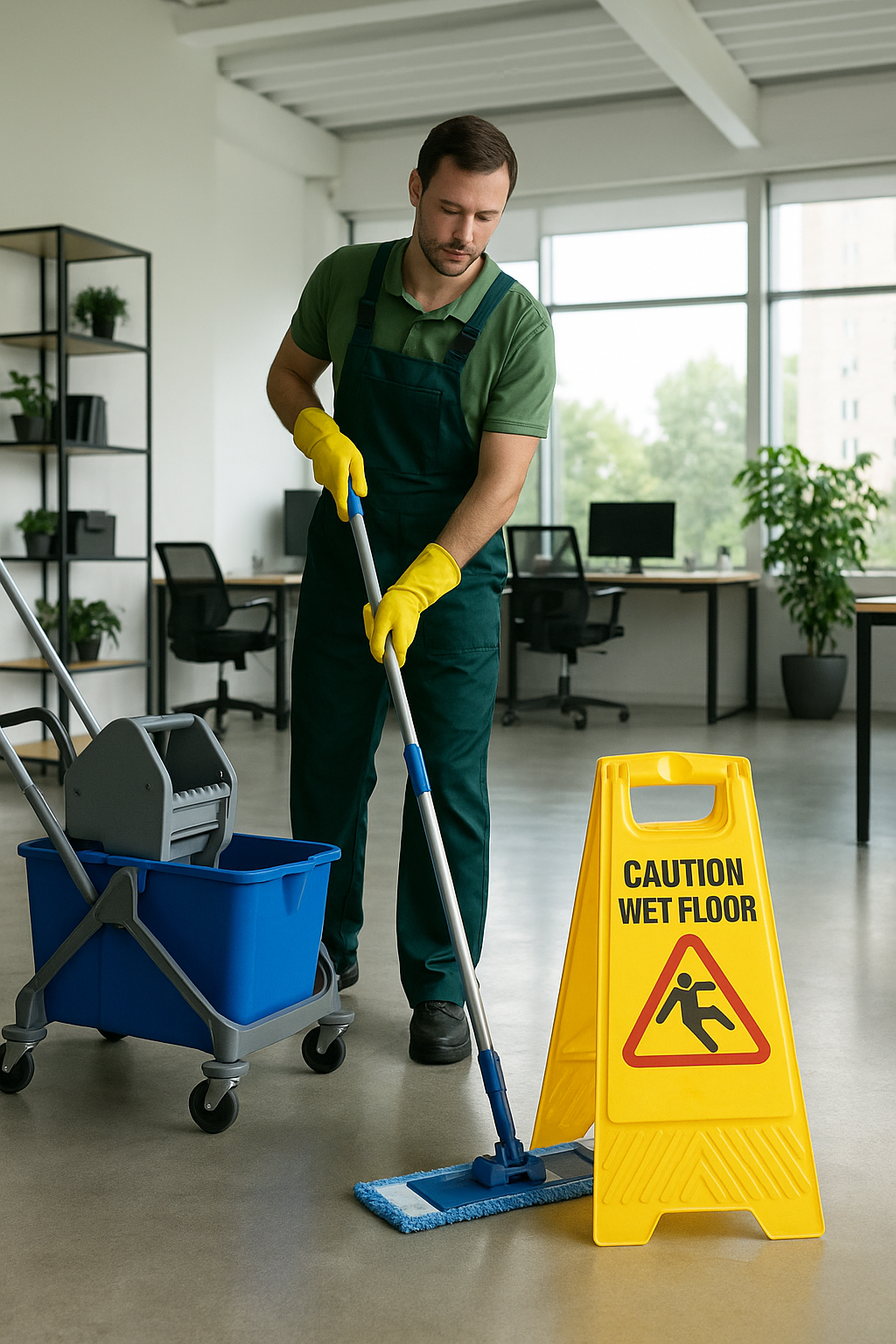
In regional Australia, where business infrastructure often intersects with community values and environmental awareness, sustainability is no longer just a bonus—it’s an expectation. As local companies adopt greener operational practices, one key area quietly undergoing transformation is commercial cleaning. Traditionally seen as a back-of-house function, commercial cleaning projects are now emerging as significant contributors to sustainable business strategies across regional NSW and beyond.
From chemical choices to water use and energy efficiency, today’s commercial cleaning initiatives are reshaping how businesses maintain their spaces while reducing environmental impact. This shift not only benefits the planet but also improves worker wellbeing, public trust, and regulatory compliance.
Rethinking Clean: Why Sustainability Now Matters in Commercial Cleaning
Modern business owners are increasingly conscious of their ecological footprint. In commercial facilities—from schools and medical clinics to retail outlets and warehouses—the choice of cleaning products, equipment, and processes plays a significant role in a company’s sustainability profile. Traditional cleaning methods, often reliant on harsh chemicals, water waste, and disposable supplies, are being replaced by smarter, more conscious approaches.
Low-tox and biodegradable cleaning products have become mainstream options, reducing harm to local ecosystems while improving indoor air quality. These products also lessen the health risks faced by staff and visitors, particularly in settings like aged care homes or childcare centres where respiratory sensitivity is a concern. Many businesses are also adopting water-conserving methods such as microfibre mopping systems and controlled-dispensing equipment to minimise unnecessary consumption.
Certified Green Practices: Going Beyond a Surface Shine
With green certification standards gaining traction, more businesses are realising that sustainable cleaning isn’t just about ticking boxes—it’s about credibility. Certifications like GECA (Good Environmental Choice Australia) or ISO 14001 reflect not only a commitment to cleaner products but also to broader sustainable management systems. For commercial premises aiming to align with ESG reporting or public sector tenders, partnering with providers who meet these standards is becoming a practical necessity.
Some regional councils and private enterprises now require cleaning tenders to demonstrate environmentally responsible procedures, reinforcing the expectation that cleaning contractors deliver more than just aesthetics. These green practices include waste segregation, responsible chemical storage, and recycling systems embedded within the cleaning schedule.
Real-World Projects Shaping the Future of Sustainable Cleaning
The impact of sustainable commercial cleaning becomes most visible when you examine actual projects implemented across NSW. Whether it's a manufacturing facility in Dubbo or an office complex in Tamworth, these real-world applications show how tailored cleaning strategies can solve environmental and operational challenges.
One standout example comes from Projects – CJM Cleaning, which showcases how commercial cleaning projects are being designed with sustainability in mind. From daily cleaning of medical centres using eco-friendly disinfectants to large-scale maintenance of industrial sites using low-water techniques, these projects illustrate how practical environmental responsibility can look in action.
These examples demonstrate that sustainability doesn’t have to be sacrificed for performance. Instead, it may enhance it—reducing downtime, extending the life of flooring and surfaces, and offering cleaner, healthier environments for staff and customers alike.
Linking Sustainability to Business Outcomes in Regional Settings
Beyond environmental outcomes, sustainable commercial cleaning practices deliver clear business benefits. Aligning with modern expectations around health, transparency, and workplace culture, many organisations are seeing positive returns in several areas.
For instance, maintaining clean, sanitised, and allergen-reduced workspaces may contribute to lower absenteeism and greater productivity among staff. In retail settings, consistently clean public areas improve customer satisfaction and brand perception. These are not abstract marketing wins—they’re measurable, bottom-line effects.
Moreover, in the context of public accountability and compliance, many regional organisations are now required to show how they manage hygiene and safety through sustainable practices. This includes everything from pandemic-readiness protocols to compliance with Work Health and Safety (WHS) standards. By embedding cleaning into their sustainability plans, businesses are reducing their legal risk and future-proofing operations.
For more insights into how business and environmental policy intersect across regional Australia, see related content in Namoinews Environment and Business.
Tech, Tools and Trends: The Future of Cleaning in Regional Areas
As expectations continue to evolve, so too do the tools and technologies behind commercial cleaning projects. Innovations like battery-powered low-noise equipment, real-time reporting software, and robotic floor cleaners are becoming more accessible—even in regional areas. These technologies not only improve efficiency but reduce emissions and energy usage, particularly when paired with smart scheduling and monitoring systems.
Internet of Things (IoT) devices are also beginning to enter the cleaning space, offering businesses detailed insights into cleaning frequencies, supply usage, and hygiene outcomes. While still more common in capital cities, these technologies are expected to gain ground in regional towns as demand grows for greater transparency and accountability.
Importantly, cleaning companies serving regional areas must balance innovation with practical logistics—like travel distances, staffing constraints, and weather conditions. Choosing the right provider becomes key to ensuring sustainable practices are actually achievable outside metro environments.
Creating Long-Term Change Starts with Clean Foundations
At a time when both consumers and governments are demanding action on environmental and social responsibility, the role of cleaning in business sustainability can’t be overlooked. From offices in Orange to civic centres in Gunnedah, commercial cleaning projects are laying the groundwork—literally and figuratively—for cleaner, more responsible business practices.
The growing focus on environmentally responsible cleaning is more than a passing trend. It reflects a fundamental shift in how Australian businesses, particularly those in regional areas, view their role in creating a healthier future. Choosing providers who understand this shift—and who demonstrate it in practice—is not just good policy. It’s smart business.